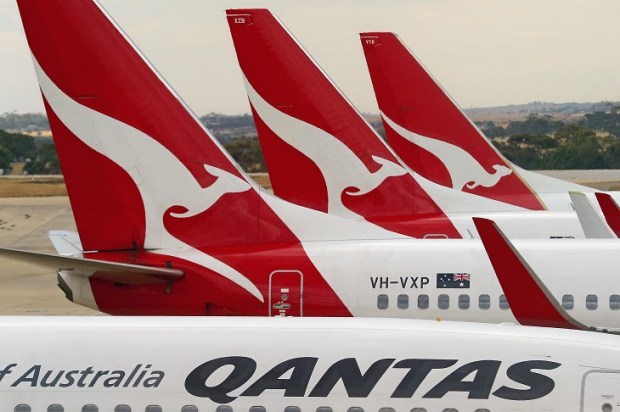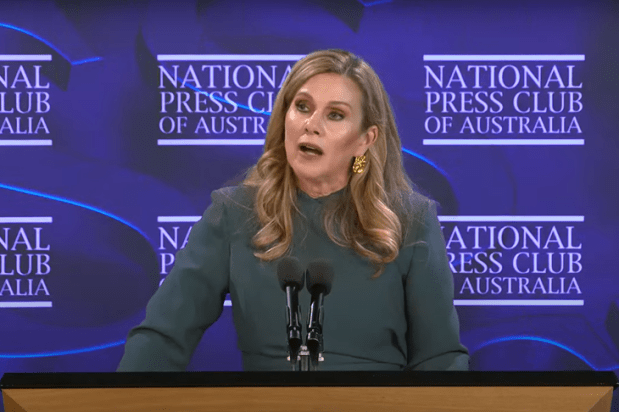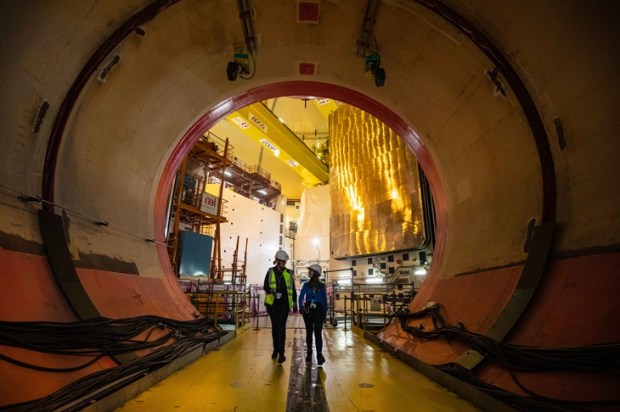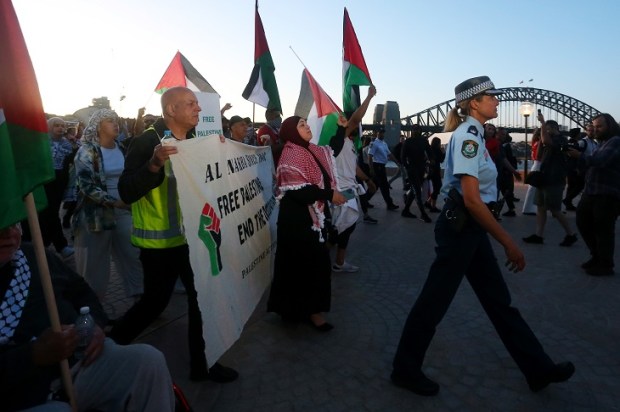The Voice is slumping in the polls and falling further behind. The referendum appears hopelessly lost with less than three weeks to go.
When I wrote my piece for Crikey on the hubris of the Voice and the amendments needed to fix it, the referendum was within the ‘Yes’ camp’s control to win. ‘Yes’ was leading in the polls with over 60 per cent in favour.
Inside the ‘Yes’ camp, confidence was sky-high that once the campaign properly began, their message would win easily. Almost all main media outlets, big corporates, elites, sporting bodies, and academia were adamant ‘Yes’ proponents. It was a virtuous thing to support and considered plain wrong, even offensive, to be against it. ‘Yes’ also had an intimidating funding upper hand of more than 20:1.
These overwhelming superiorities in support would surely prove decisive…
Against all odds – and the whole balance of power – Australian voters have gradually changed their minds from ‘Yes’ to ‘No’.
‘Yes’ might have succeeded with ease with an advisory Voice to Parliament as conceived by the Uluru Statement from the Heart. The concept had significant bipartisan support and it may have achieved a referendum margin as high as 70-80 per cent with limited opposition.
But ‘Yes’ not only failed to convince the Australian public, week by week, it repelled voters.
There were four main reasons.
Overreach in the power of the Voice
The hubris I wrote about in February was not addressed when it could have been. A first draft proposal for the Voice had been floated at Garma, long before. But the crunch came in late February through to mid-March when the legal drafting of the proposed Constitutional change was effectively finalised. This is what would be voted on.
Frenzied and, at times, heated negotiations took place between key players on all sides. These discussions involved a slew of constitutional lawyers with input from some of the sagest Indigenous affairs advisers and hard-headed ALP number counters, plus political adviser Crosby Textor. Essentially, it was a trade-off between what could go into the Voice’s legal wording and what would be able to win popular support. Would the Voice be purely advisory to Parliament, or could it be much more? In a dramatic end, despite a last-minute public intervention by Mark Dreyfus to try to stop it, the strongest proponents of the Voice’s power – Noel Pearson and the Prime Minister – prevailed.
The Voice would not only make representations to Parliament, but also to Executive Government. This reach was not in the Uluru Statement from the Heart.
Including the Executive Government was an enormous escalation in influence and power. It potentially created a line of representation from the Voice to every Federal Department and each of their bureaucrats. Representations made by the Voice could be reviewed by the courts, if not followed, heightening the authority of each representation. With all these lines of influence, the unelected Voice could wield staggering power as a new Chapter of the Constitution – alongside Parliament, the Executive, and the Judiciary. It would do this with no accountability to anyone.
An additional key change to limit the Voice’s power, strenuously advanced by respected Indigenous advocate and lawyer Father Frank Brennan and by others (but rejected more summarily), was that the Voice’s representations should be confined only to matters especially affecting Indigenous people, instead of all matters generally (as adopted in the final wording).
The process and the final result infuriated, energized, and united opponents. It alienated important Liberal Party moderates and some key conservative supporters. Bi-partisan support, or even a free vote in the Liberal Party became impossible. Only a few Coalition MPs defected to ‘Yes’ on conscience grounds, a disappointing result for Voice strategists.
‘Yes’ started the referendum campaign well ahead in polls and with vast advantages, but with a difficult product to sell and fierce opposition. It started to stumble.
Chaotic ‘Yes’ campaign
‘Yes’ ran a chaotic and undisciplined campaign. There were too many blunders to mention them all, but essentially ‘Yes’ lacked a clear leader with a consistent message.
To the Prime Minister, the Voice was hardly a change worth debating – a ‘modest proposal’ and mere ‘good manners’. To Noel Pearson, it was some kind of power-sharing ‘partnership’ between the Voice and non-Indigenous Australians. To Megan Davis, the Voice had ‘enormous power’. To Thomas Mayo, the Voice was something radical to ‘decolonise the country’. Sometimes these and several other Voice proponents spoke in the media on the same day, or the day after, contradicting each other.
The Prime Minister gave speeches to packed Business Council of Australia dinners urging CEOs and leaders to do much more than just support and donate to the Voice, to also urge their staff to vote ‘Yes’ and to market the Voice to their customers. Suggesting the productivity agenda – like taxation reform – was on the table for acceleration or not, depending on their level of collective support. But it achieved little except bewilderment amongst many there that such union rally style carrot and stick tactics could be applied this way. Business leaders were already doing all they could.
Abuse of those who were not persuaded by ‘Yes’ became a regular tactic. Opponents were called ‘racists’, ‘bastards’ or ‘stupid’, along with a range of other more colourful expressions. This may have given satisfaction to committed ‘Yes’ voters, but it only hardened the ‘No’ camp against them and gradually turned undecided voters and soft ‘Yes’ supporters into ‘No’.
It was risky to choose unpopular Qantas to be the Voice’s icon, and that mistake escalated almost immediately after a series of scandals blew up.
Even the feel-good John Farnham song, intended as the campaign-making moment, fizzled. In the era of sound bites and TikTok, it’s 20 years since people have watched a nearly 3-minute-long commercial – and almost nobody did.
The vibe of the Voice was meant to be positive. But the ‘Yes’ campaign’s pugilistic, almost civil war-like campaigning undermined the very essence of what the Voice was meant to be all about.
Perhaps the most astonishing failure of the ‘Yes’ campaign is that proponents of the Voice still cannot suggest a single thing that would be done differently on the ground to help improve Indigenous lives and outcomes. Instead, they repeatedly dodge the question or put it off until after the referendum.
The only thing the ‘Yes’ campaign has been disciplined about is to keep almost all mention of the reach to the Executive Government out of their talk, their op-eds, marketing and collateral.
‘No’ grassroots campaigns with consistent messages
‘No’ has been backed by many hundreds of energised and capable people. They have tens of thousands of donors, plus thousands of committed active signed-up volunteers. Each of them with a fire in their belly.
There are multiple independently operated ‘No’ campaigns fighting simultaneously, all with almost exactly the same messages.
‘The Voice is divisive.’ ‘The Voice will have too much power.’ ‘There’s no detail about how it will work.’ ‘It’s too risky!’ ‘You can’t trust Albo!’ ‘If you don’t know, vote “No”!’
Every day the campaign goes on, the ‘divisive’ message has resonated more loudly.
Advance Australia is running the leading ‘No’ campaign outside the LNP. Their donors and donations are growing exponentially as the campaign progresses. Advance Australia sends punchy, consistently-themed emails to their followers every week or two. Volunteers can sign up for various activities and are trained in different tasks for the referendum campaign. Some take online classes and now nearly a thousand callers perform outbound calls on advanced tech HubSpot targeting soft ‘Yes’ and undecided voters. The ‘Yes’ campaign consistently bleeds votes to ‘No’ from these calls. The possible loss of Australia Day is proven to be the single biggest trigger swinging voters over to the ‘No’ side.
One headwind for the ‘No’ campaign is the media spotlight on a few undesirable allies in ‘No’ voters including the controversial Clive Palmer. The attention given to these people with other agendas muddies genuine No issues on the Voice.
Senator Jacinta Nampijinpa Price
The X-factor of the campaign is Senator Jacinta Nampijinpa Price.
Having not lost her cool or cheery demeanour, she tirelessly engages in media appearances and speaks at rallies all over Australia, focusing on the perceived swing states of South Australia and Tasmania.
An inspiring public speaker, she has a strong critique of the Voice ideology.
Her views are sophisticated and nuanced, and include insider insights into the strengths and weaknesses of Aboriginal Councils and other representative bodies, including activist groups. These insights are shared more often than not with a big smile as she explains again and again why the Voice would make things worse, not better, for Indigenous people.
‘Canberra needs ears, not a Voice!’ is one of her favourite sayings.
But perhaps most important of all, she brings a positive message of hope.
She has repeatedly explained how Indigenous activism often encourages Indigenous people to see themselves as victims with a perpetual grievance. This, she points out, is counterproductive to taking responsibility for oneself and getting on with life.
We need to change attitudes and ‘give people more agency, opportunities, and legs up’ and ‘we need to give people hope and teach self-reliance, not grievances’.
In a relentlessly negative campaign, she has been a constant light of positivity. Her interviews have sparked many newspaper stories and her very many rallies have resulted in multitudes of shares on social media and kitchen table chats about something good. Attendees line up to meet her afterwards and she always smiles for selfies taken together.
‘How do you cope with all the attacks and nastiness?’ I asked her one time after she had been appallingly slurred in the newspapers by a Voice proponent. She beamed straight back at me, ‘I celebrate every single day!’
The Voice is dying, long live the spirit embodied in Jacinta Nampijinpa Price!

























